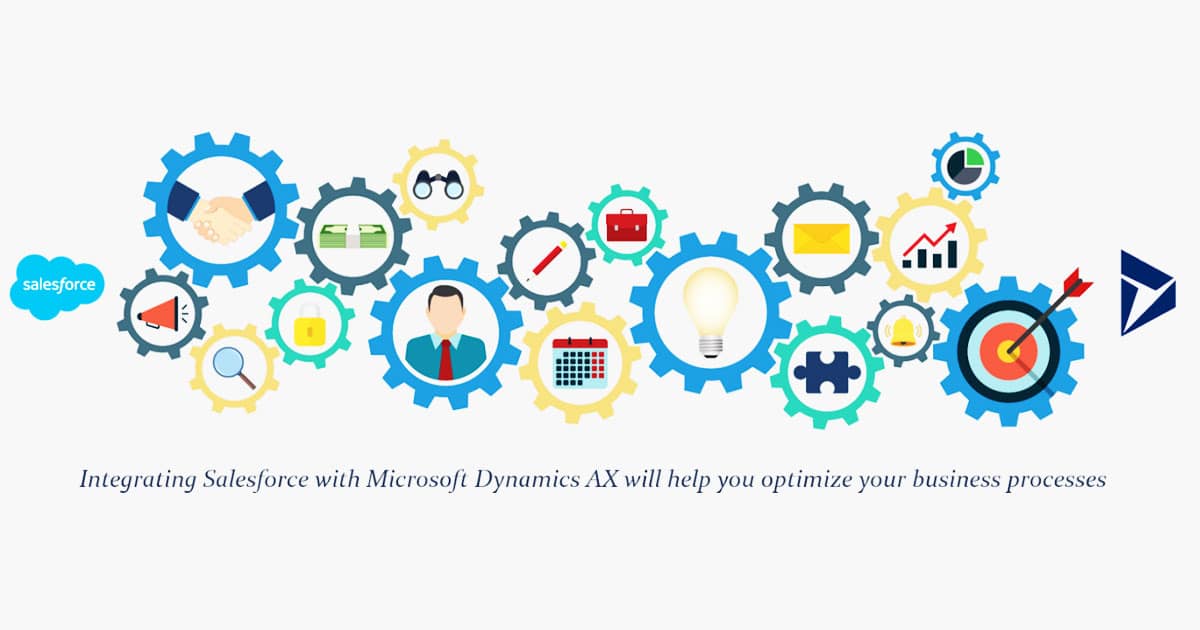Organizations, largely, equip themselves with everything they need to be successful. And yet, along the way, despite rock-solid technologies, they sometimes fumble. Inefficiencies plague their systems, their workflows, and their decision-making processes. All these slow their march toward industry dominance to a slow crawl against competitors who—somehow—have gained the upper hand. One edge might be how they use Microsoft Dynamics AX integration.
From manufacturing to consumer goods and retail to distribution, Microsoft Dynamics AX is prolific. The utility that Microsoft brings these industries through its robust business software is not only unique but also, it’s intensely powerful. This software is currently helping players in these industries with intelligence, management, finance, human resources, and nearly every branch of operation. So, why do businesses in such sectors struggle?
The problem is often scaling. All businesses seek to grow and to garner loyalty from customers each day, each quarter, each year. Still, it is this growth that can lower their levels of productivity and cause difficulty with keeping pace with the number of potential customers. This leads to lower rates of fulfillment, more errors in their systems, and difficult decisions being based on incomplete, faulty data.
Integration, however, changes the game. Within each major industry that uses Microsoft Dynamics AX, integration with a system like Salesforce can be seen reducing data inefficiencies, simplifying information sharing, and generally leading to greater profits and happier customers.
Manufacturing
Within the manufacturing sector, the Microsoft Dynamics AX platform helps leaders to identify resource needs for the entire organization. In addition, it allows them to plan how materials and funds are dispersed within, and it also enables visibility to the supply chain and procurement of further resources in the course of business.
Through integration with Salesforce, for example, those who manage company resources can simplify complex workflows and connect their ERP data to CRM information on customer sales, orders, and difficulties without requesting insight from disparate teams. This means more precise management and a better idea of where to allocate resources.
Consumer Goods
For those who distribute and sell consumer goods, an ERP like Dynamics AX and a CRM like Salesforce is essential for creating higher levels of consumption. Similar to manufacturers, companies dealing in goods must meet the demand of their customers. When their ERP and CRM platforms are working separately, different teams and decision-makers see siloed insights that often miss the larger picture of what is happening in the market.
On the other hand, those that integrate can better manage their margins by combining data on customer interactions with the company with all the key, core functions that the ERP provides, such as financial management and supply chain management. With a better ability to see and understand market trends, companies in consumer goods can gain an advantage, innovate with products, and stay ahead.
Professional Services
Professional services demand a thorough and consistent approach to project planning, unlike many other industries. There is little room for human error, but, at the same time, it is an area that is highly centered around understanding people and clients.
On the project side, ERP tools are highly useful. Then, Salesforce helps many to manage customer sales and service. Unfortunately, when these systems don’t work together, there is significant time spent rummaging through them, copying data manually from system to system, and losing data to unfortunate human error in doing so.
Through integration, professional services can simplify the duplication of storage and cut the need for manual data entry by bringing their ERP and CRM into constant, cloud-based communication. There’s no longer a need to search for information crucial to project planning or status updates when each system shares the key data points needed to move forward.

All Domains
Any organization that sees the benefits of having both Microsoft Dynamics AX and Salesforce can benefit from the increased efficiency and power of simple, seamless integration. Those who avoid the need for integration are likely to suffer more and more blocks to the pace of their growth while their sources of truth remain isolated.
Through integration, management can enjoy an easier, more automated way of allocating resources, strategizing, and achieving milestones. Alongside them, employees become more equipped to succeed in their role, having all the information they need at their fingertips. Everyone, in short, opens the lines of communication and starts operating from a core of data that moves the organization toward a coordinated goal.
Rise in Your Industry with Integration from Rapidi
Rapidi removes the complexity of integrating ERP with CRM systems for better company-wide performance. Their solutions combine the simplicity of custom templates with the visibility of cloud storage. Explore Rapidi for Microsoft and Salesforce.
